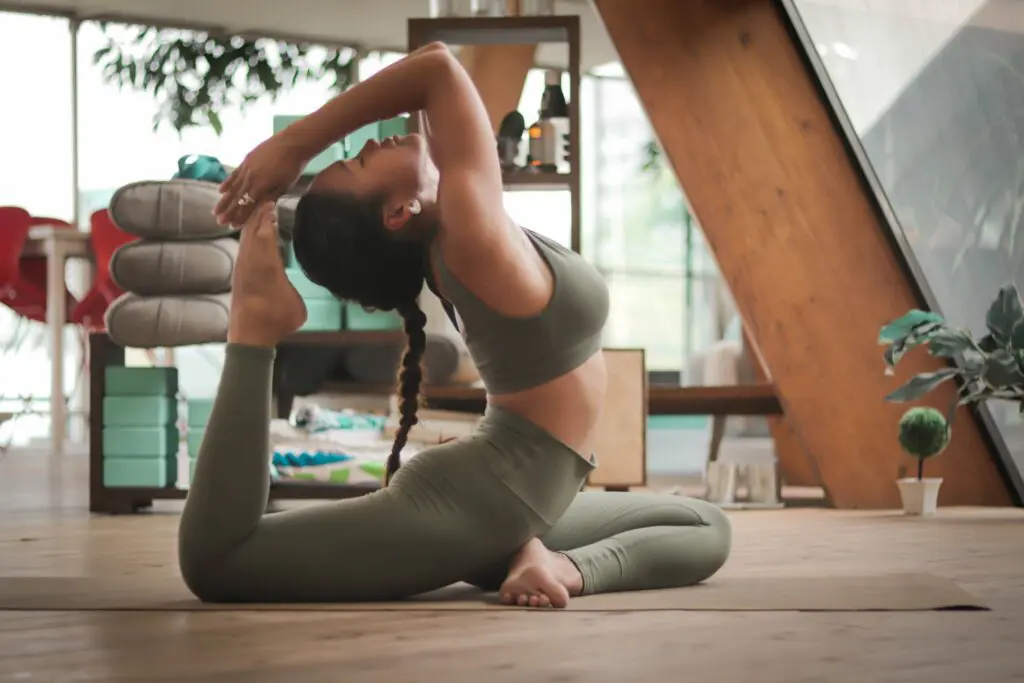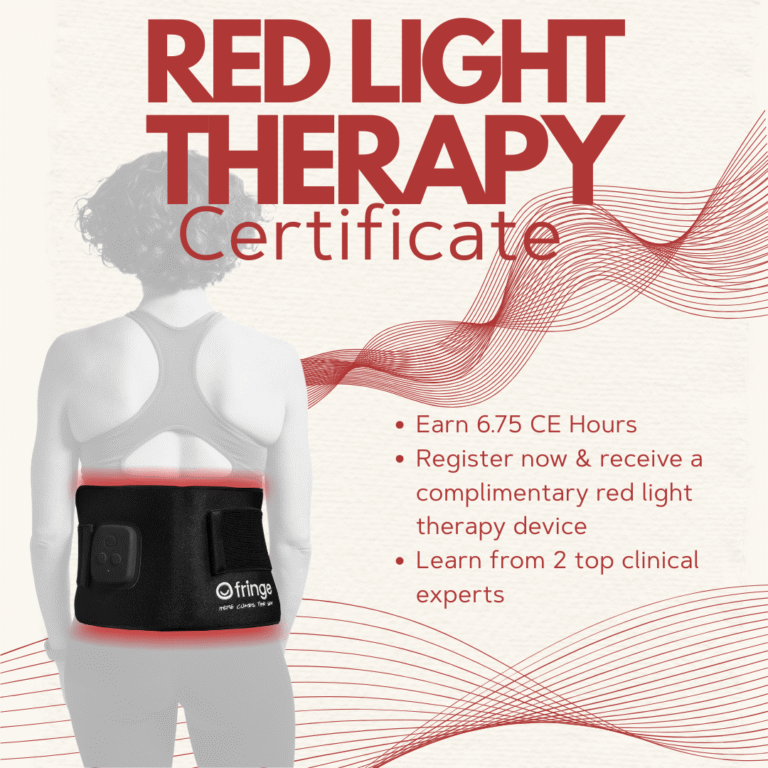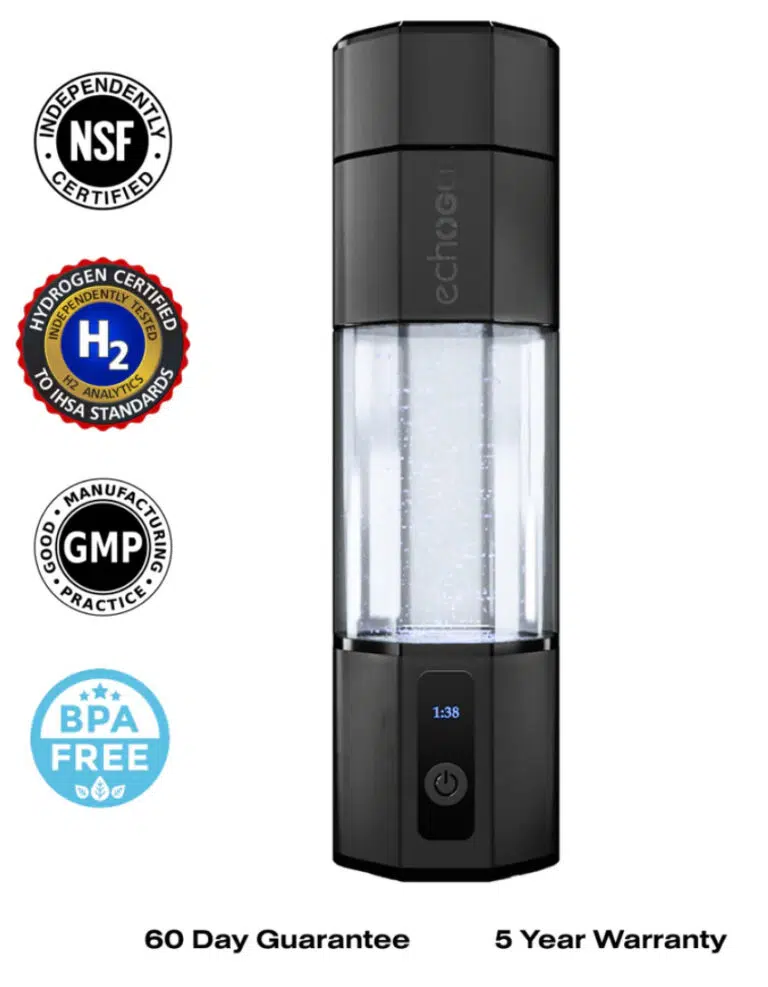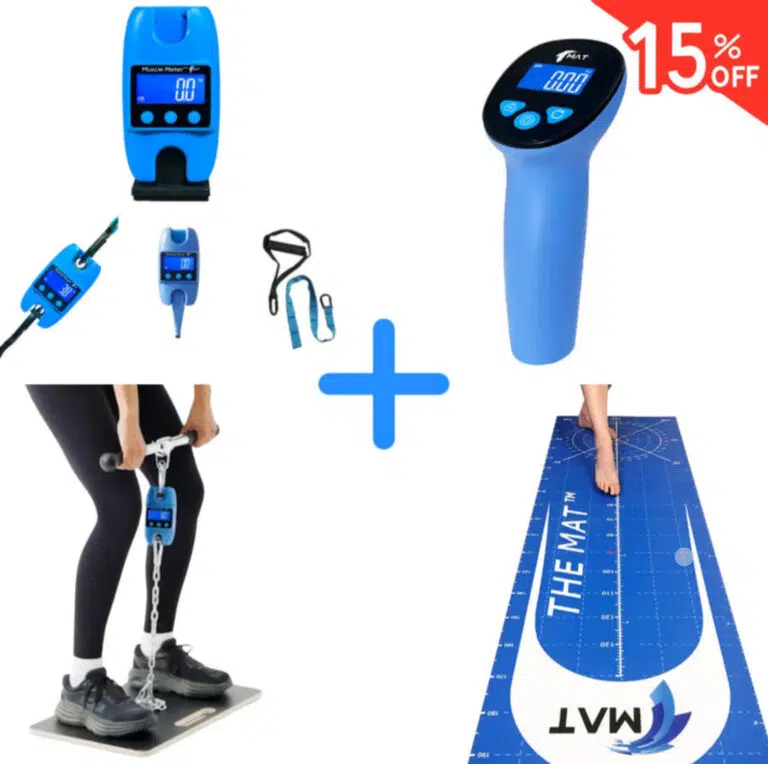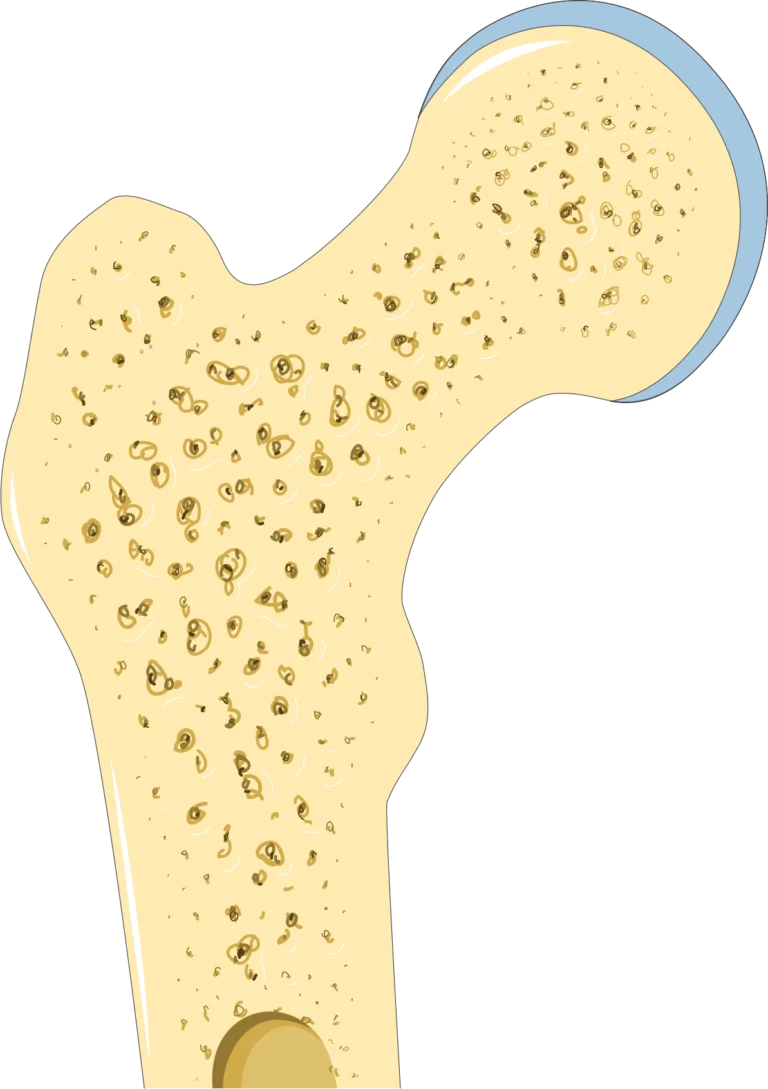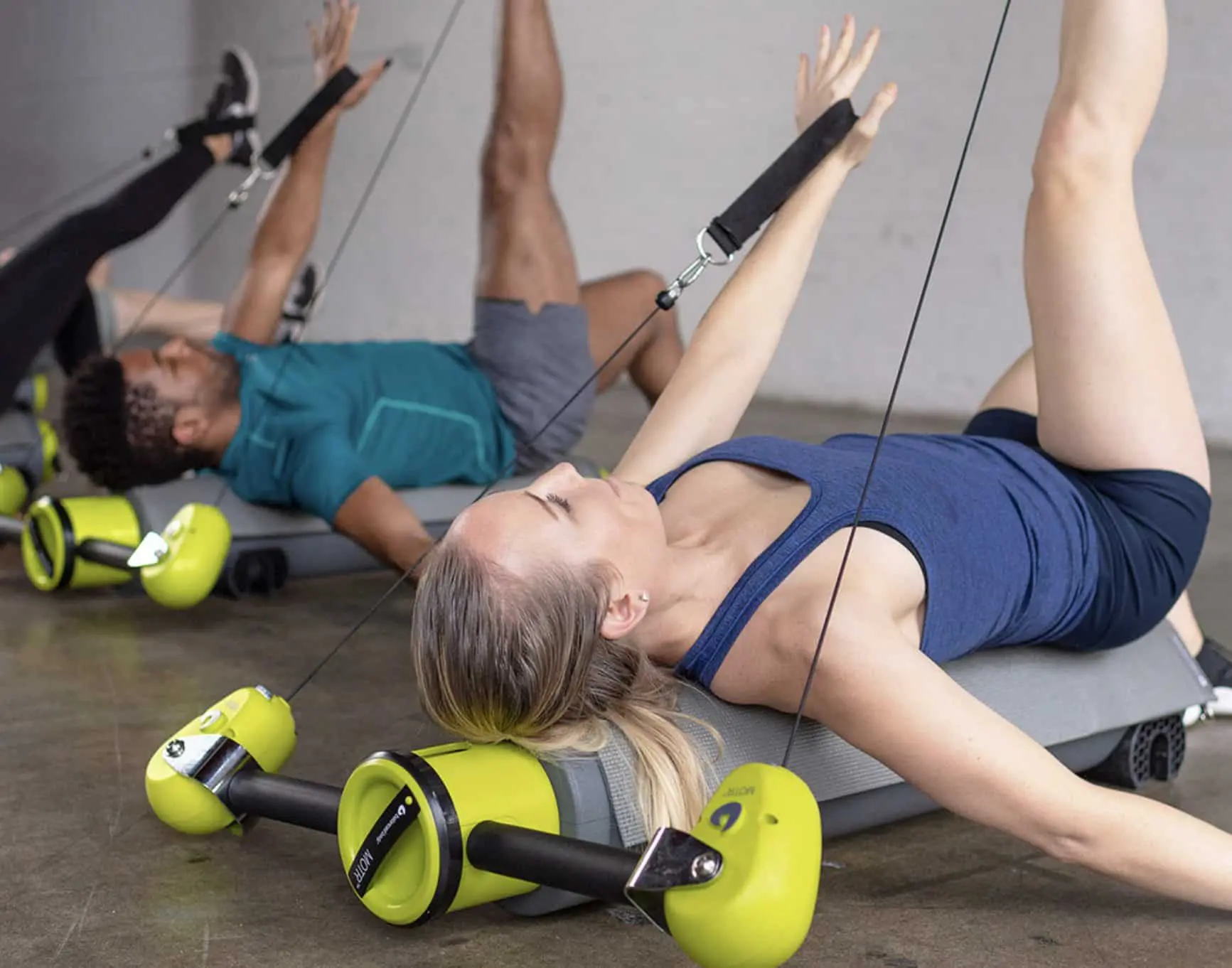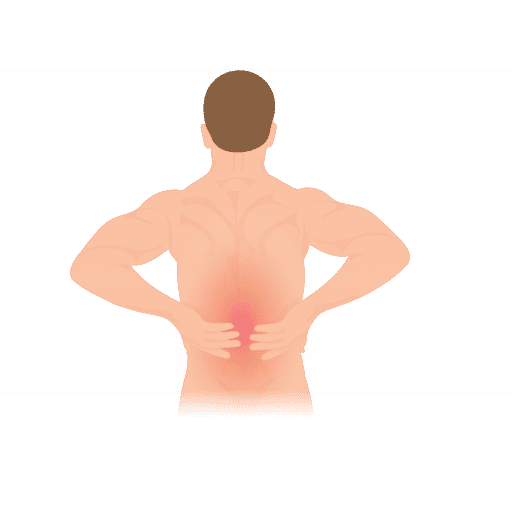Pilates versus yoga is a popular opposition, but these two movement programs also share a lot in common. Both yoga and Pilates are two popular exercise programs that offer a variety of benefits. Both can help improve flexibility, strength, and balance. They also can help reduce stress and promote relaxation.
Pilates versus yoga may not be an either-or question. Many fitness schedule both Pilates and Yoga, or Yogalates hybrids.
But what – if anything – do these two practices have in common? A lot more than you may think.
Though yoga and Pilates both focus on strengthening the core, increasing flexibility, and the mind-body connection, there are some key differences between the two practices.
Support bookstores by buying the titles above from bookshop.org!
What is Yoga?
Yoga focuses on linking movement with breath (in Sanskrit ‘pranayama’) to create flow, while Pilates is based on a series of controlled, deliberate movements.
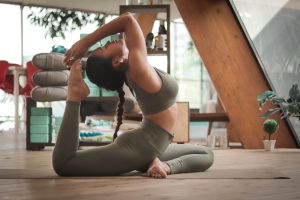
Both yoga and Pilates can be practised in group classes or private sessions, and both can be adapted to different fitness levels. However, because of their different approaches, yoga and Pilates offer different perks to practitioners.
Yoga typically involves a series of postures (called ‘asanas’) or poses, often combined with breathing exercises and meditation. There are many different types of yoga, including:
- Vinyasa (poses flow into each other),
- Hatha (slow, deliberate movements that focus on strength),
- Kundalini (breathing technique, mantra-chanting, and gentle postures to align the energies), Bikram (routine postures conducted in a heated room),
- Ashtanga (more athletic movements that focus on endurance and flexibility)
- Aerial (conducted on a suspended hammock to focus on upper-body strength)
Learn more about yoga and modern scientific reasearch: Yoga Research Articles: Read New Findings!
What is Pilates?
Pilates is a relatively new exercise system developed by German-born Joseph Pilates in the early 20th century. It is based on six principles: concentration, control, center, precision, breath, and flow. Pilates is typically performed on a mat or special equipment that works with weights, springs, and levers designed for the purpose.
You can read more about Pilates here.
Healthy feet…great price!
- Fast shipping for $3-5
- Great variety
- Long-lasting quality
- Add lace-locks for quick changes

Try minimalist shoes from XeroShoes.com!
Comparing Pilates Versus Yoga
Both yoga and Pilates offer some spiritual rewards. However, yoga is more likely to focus on the inner self. At the same time, Pilates may be more beneficial for those seeking to connect with their physical body and increase their spatial awareness.
While yoga and Pilates share some similarities, there are also significant differences. Yoga is commonly believed (but see below) to be an ancient practice that passes along poses from antiquity along with its emphasis on mindfulness and breathing. Yoga can help improve flexibility and focus, as well as reduce stress levels.
In Yoga Body: The Origins of Modern Posture Practice, Mark Singleton argues that yoga is in fact not an ancient practice.
Instead, what is commonly called “yoga” today came about only a little earlier that Pilates (and seems to have very similar roots in northern European health routines. It’s a fascinating and controversial read!
Pilates, on the other hand, is recognized as a relatively modern exercise that emphasizes controlled movements and alignment. It is often recommended for improving core strength and posture.
When choosing between Pilates versus yoga, it is important to consider your fitness goals. Yoga may be the better option if you are hoping to improve your flexibility or reduce stress. Pilates may be a better fit if you want to build strength or improve your posture. Ultimately, the best way to decide is to try both and see which you enjoy more.
Similarities
- aim to improve overall health
- are low-impact workouts that focus on using bodyweight resistance
- use the breath to initiate movement
- CAN be done with little equipment, but the full array of Pilates exercises requires specialised equipment
- require mental focus and so reduce stress
- can be tailored to different fitness levels
- increase strength and flexibility
Differences
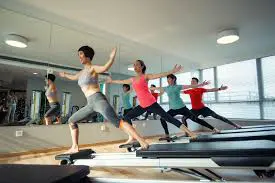
Yoga
- Yoga comes in many forms, from relaxing sessions that include meditation and chanting to more athletic and challenging sessions aimed at burning calories
- In yoga, you typically adopt a position and hold it or flow into a different posture (asana)
- Yoga places emphasis on mind and body fitness, with mindfulness and deep breathing being key features in the practice
- Yoga deepens meditation practice, improves flexibility and helps with balance
Pilates
- Can be adapted to different fitness levels within the same system of exercises
- Pilates strengthens body awareness and therefore the mind-body connection
- It focuses on small movements initiated in stabilizing muscles, i.e. the back and core
- That is, in Pilates you adopt a position and then challenge your core by moving your arms and legs
- Although Pilates can be conducted on a mat, it also uses unique equipment with springs, weights, and levers
- the requirement of some equipment in Pilates means that it is more expensive to practice and usually requires that you attend a studio
- Pilates may be better for those recovering from an injury, individuals with pain and disability, as well as those wanting to improve posture and increase core strength
Pilates Versus Yoga: Before you get started…
Both yoga and Pilates offer many benefits, so it’s valuable to choose the program that is right for you.
If you’re trying to solve your Pilates versus yoga question, you can always try a few classes of each first. You might read our article to prepare for your first Pilates class.
If you have any health concerns, be sure to consult your doctor before starting either program.
Support bookstores by buying the titles above from bookshop.org!
